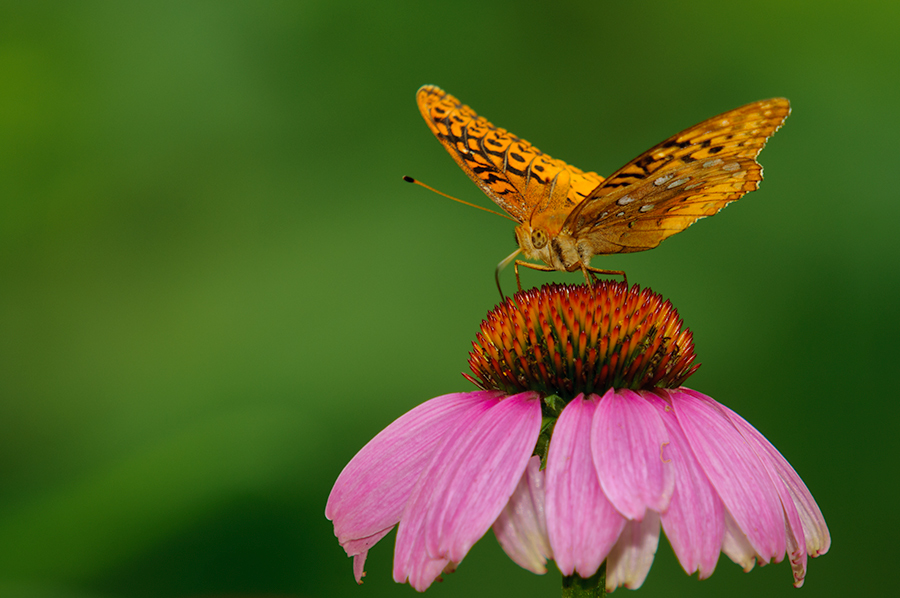
For a photo like this, a Fritillary butterfly on a Purple Coneflower, I would usually pull out my macro lens, the SIGMA 150 mm, f2.8, and then follow the insect like a madman. It just doesn’t always work very well, especially on a very warm day when butterflies never seem to stop in their movements. I tried to do something different by attaching a 1.4 teleconverter to my Sigma 50-500, giving it a 700 mm focal length and having the whole rig mounted on the tripod. With the teleconverter the lens does focus only manually. This is how we have done it back in the old days and I realized how much autofocus has spoiled us over the years. So, why did I use such a long focal length and put up with manual focus and a much slower lens (this image was shot at 700 mm, equivalent to 1050 mm on a full frame sensor, 1/60s, f/9, and ISO200)? The answer is, because of background control. The slow approach (camera on tripod, manual focus) made me to visualize the shot long before I hit the shutter release button. I made only a few clicks until I had what I wanted…:-)








